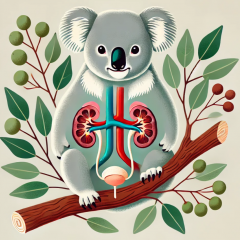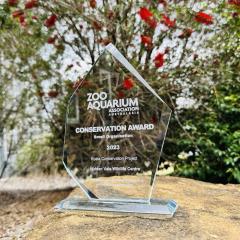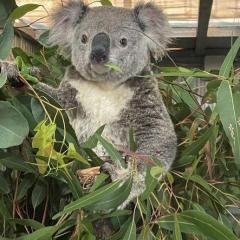Research aimed at better understanding and ensuring the survival of Australia’s endangered mahogany gliders has been bolstered by a generous donation from the late Phil Tow, a UQ Science alum.
The $10,000 donation will fund studies to improve our understanding of the needs of, and care for, this iconic Australian species thereby improving their survival and captive breeding programs.
The Manager of UQ’s Native Wildlife Teaching and Research Facility, Trish O’Hara, said the donation would positively impact the University’s work towards ensuring the survival of the endangered mahogany glider.
“The University of Queensland is proud to be one of the institutions breeding this species to ensure their continued survival,” Ms O’Hara said.
“The major threats for this species include habitat loss, degradation and fragmentation.”
The mahogany glider is an elusive and silent gliding marsupial, which was first described in 1883, but not observed in the wild until 1989.
UQ School of Agriculture and Food Sciences researcher Dr Julia Hoy and Ms O’Hara are conducting several mahogany glider research projects on microchip-automated husbandry, and nutrition.
“Like most captive wildlife, the mahogany gliders maintained at UQ are already implanted with Radio Frequency Identification (RFID) microchips for identification purposes,” Dr Hoy said.
“These microchips can be linked with automated equipment such as commercially available pet feeders and doors to provide an extensive and unpredictable variety of food, enrichment and access to space on an individual animal basis, to more accurately replicate aspects of the natural environment.
“If the study animals successfully use the microchip-automated feeders and doors, this will be the first recorded use of these commercially available devices with mahogany gliders.”
Dr Hoy said the research would provide valuable ‘proof-of-concept’ information that could have broad impact for captive and free-living wildlife.
“Using microchip-automated technology to provide released wildlife with short-term access to supplementary feed and areas of refuge from predators, while also monitoring populations should improve the success of wildlife reintroduction programs,” she said.
In a second study, the researchers hope to improve understanding of mahogany glider nutrition.
Ms O’Hara said the species had a tendency to become obese in captivity, emphasising the importance of the planned research to determine their specific nutritional requirements.
The project will compare the current mahogany glider diet at UQ, other zoo diets, and a commercial sugar glider diet to ensure the species will receive the highest quality, most suitable diet.
This is an example of the type of research which UQ will undertake at the Hidden Vale UQ Wildlife Centre, a multi-million dollar teaching and research facility generously funded by the Turner Family Foundation.
Information collected during this research will be shared with other zoos currently maintaining mahogany gliders to ensure a consistent and appropriate diet across institutions.
Ensuring the survival of native Australian species is a priority for UQ’s Native Wildlife Teaching and Research Facility. To find out more about how you can support the work of the UQ Native Wildlife Teaching and Research Facility please contact UQ Faculty of Science Philanthropy Manager Julia Keith j.keith2@uq.edu.au, +61 7 3346 3143.



